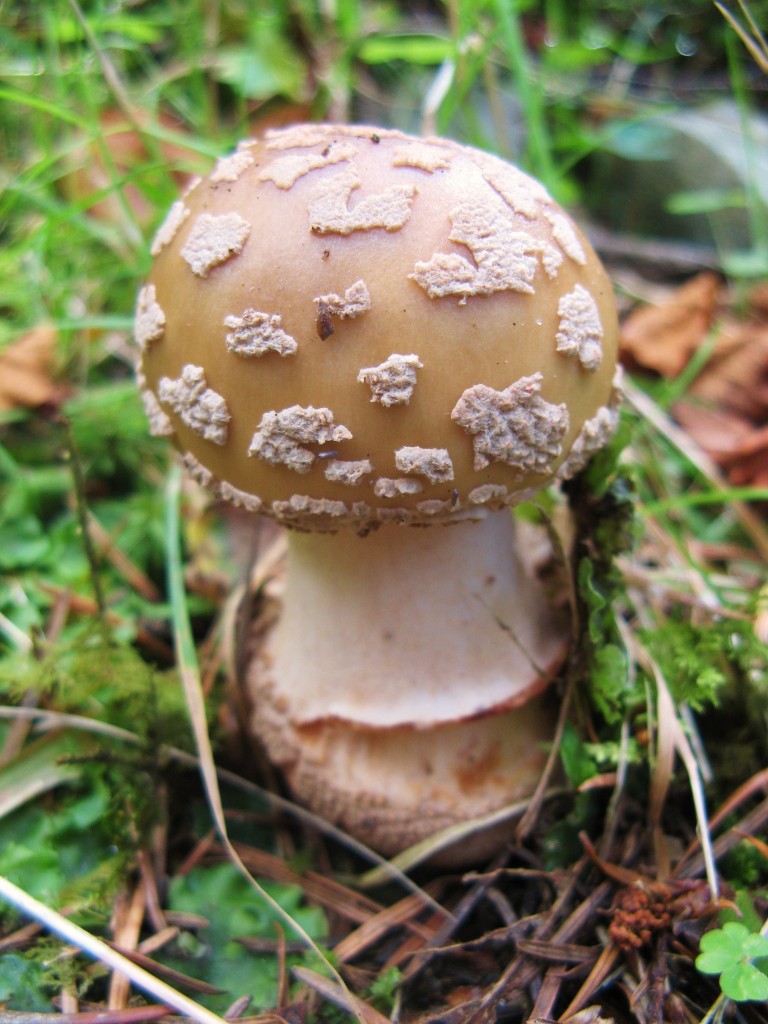The Blusher – Edibility, Identification, Distribution
Amanita rubescens
- Edibility – 3/5 – Must be cooked. . I have no problem eating it well cooked in soups, stews, fried etc without the pre-boiling, but you should certainly start by following standard advice to chop, boil in salted water for up to 5 mins, discard water, rinse, then use as usual.
- Identification – 1/5 – Despite being very easy to find, the blusher is not a beginners mushroom – never munch on a hunch! Identification for the table requires close observation. Key features of bulbous base, white ring on stipe, white gills, brown cap with white scales are not enough to be sure you have a blusher. A tendency for its white flesh to bruise pinkish-red when damaged should support your identification. Be sure you do not have a Panther Cap (amanita pantherina) which does not have a grooved ring and does have a distinct rim (like an acorn cup) on its volva/base. The margin (cap edge) of blushers tend to be striated (finely grooved), while the panther cap has a smooth margin. The cap of the panther cap tends to be more reliably deep brown, though cap colour in all fungi, and especially amanitas, can change rapidly according to weather condition and age. Despite being very easy to find, the blusher is not a beginners mushroom – never munch on a hunch!
- Distribution – 5/5 – Very common indeed
- Season: June – November
- Habitat: most conifers and deciduous trees, but especially birch, beech, spruce and pine.
The blusher is one of the UK’s most common mushrooms, and certainly its most common edible fungi. Very few fungi forays fail to turn one up, usually dozens, often hundreds. So its something of a shame that its scary relatives (death cap, destroying angel, fly agaric, and especially panther cap, on account of it being a similar colour) mean its very rarely eaten by any other than the most confident mycophagists.
I have seen hundreds of thousands of blushers over my 30 or so years of fungi foraging (mostly in W Scotland) but never knowingly found a panther cap. The fact that I walk past so many blushers without going into close ID mode, might mean i’ve missed some panther caps down the years. But they are certainly not common in Scotland. I’d love to find one and acquaint myself more closely with it! They are powerful hallucinogens, seemingly beyond even the fly agaric, and while they have been used in shamanic rituals, and certainly aren’t quite so deadly as death caps and destroying angels, it would be very foolhardy to mess with panther caps recreationally!
Another barrier to eating blushers is their extreme susceptibility to fungal gnat larvae infestation. Like ceps, they can be riddled with wrigglers before they are even close to fully formed.
But I still can’t help thinking we are mostly missing out on an excellent food source here…
Related Pages:


2 Comments
Are Blushers hallucinogenic?
No